Comments / Questions (41)
![]() Inger Eriksson wrote:
Inger Eriksson wrote:
Hej! Varför hamnar knapphålen längst ut mot kanten istället för mitt I, gäller västen
17.05.2025 - 08:59DROPS Design answered:
Hej Inger, du strikker 4. og 5. masker (set fra kanten) ret sammen, så kommer de et stykke inde på vesten :)
21.05.2025 - 14:13
![]() Anita Andersson wrote:
Anita Andersson wrote:
Hej, undrar varför inte avmaskning för halsringning är lika på höger o vänster sida. På höger sida är det ett antal avmaskningar vav och sedan 1 minskning vart 4de v. Och på vänster sida samma avmaskning vav och sedan varje varv. Är det felskrivet eller ska det vara så? Mvh Anita
23.04.2025 - 15:13DROPS Design answered:
Hej Anita. Tack för info, det var fel i den svenska översättningen. Det ska vara likadant på höger och vänster sida, detta har nu rättats. Mvh DROPS Design
25.04.2025 - 10:36
![]() Pascale TROY wrote:
Pascale TROY wrote:
Bonjour Je ne comprends pas comment faire les augmentations côté encolure lors de la réalisation des épaules biaisées Merci de votre réponse Car là je ne peux plus avancer dans mon ouvrage .
01.04.2025 - 22:58DROPS Design answered:
Bonjour Mme Troy, dans cette vidéo, nous montrons comment tricoter l'encolure et les épaules de ce modèle, cela devrait vous aider à comprendre comment procéder. Bon tricot!
02.04.2025 - 08:02
![]() VERONIQUE MIGNEAU wrote:
VERONIQUE MIGNEAU wrote:
Graag zou ik deze slipover breien ENKEL in drops alpaca, zonder de silk drops draad. Wat zijn dan het aantal steken op te zetten, af te boorden.... Is daar een berekeningsmethode voor? Ik zou werken met naalden 3.5 ipv 4.5. Hartelijk dank voor uw antwoord. Veronique Migneau
31.03.2025 - 06:54DROPS Design answered:
Dag Veronique,
Hierdoor krijg je een andere stekenverhouding. Maak eerst een proeflapje en op basis hiervan kun je het aantal op te zetten steken omrekenen. Het is helaas voor ons niet mogelijk om patronen aan te passen naar persoonlijke wensen.
02.04.2025 - 10:11
![]() Bogusia wrote:
Bogusia wrote:
Wykonałam ściśle według opisu.Wyszlo bardzo dobrze.Opis zrozumiały. Dziękuję 🙂
20.02.2025 - 18:03
![]() Danka wrote:
Danka wrote:
Dzień dobry. Czy po 5 cm ściągacza brzegi robótki nadal przerabia się opisaną metodą I-CORD, czy już normalnie tylko ściegiem francuskim?
16.02.2025 - 17:27DROPS Design answered:
Witaj Danusiu, dalej przerabiasz dżersejem, a brzegi ściegiem francuskim z I-cordem. Miłej pracy!
17.02.2025 - 12:56
![]() Olena wrote:
Olena wrote:
Hello . Question about knitting the left side of the shoulder. how to decrease the first stitch at the beginning of the row from the neckline side, if the second row is a front row and it starts from the armhole side??Is there a video tutorial on how to knit the left shoulder?
10.02.2025 - 19:41
![]() VALTON ISABELLE wrote:
VALTON ISABELLE wrote:
COMBIEN DE PELOTES POUR UNE TAILLE M. GILET SANS MANCHES
04.02.2025 - 11:18DROPS Design answered:
Bonjour Mme Vanton, vous trouverez la quantité totale nécessaire pour chaque taille en haut de page, sous l'onglet "Explications", autrement dit, en taille M, il faudra 200 g DROPS Alpaca/50 g la pelote = 4 pelotes Alpaca ou bien 200 g DROPS Flora /50 g la pelote = 4 pelotes Flora + 100 g DROPS Kid-Silk/25 g la pelote = 4 pelotes Kid-Silk. Bon tricot!
04.02.2025 - 15:16
![]() Wilma wrote:
Wilma wrote:
Ik heb gisteren een vraag gesteld en nu krijg ik een balkje waarin staat dan ik een spammer ben? Gaat er nu iets niet goed?
23.01.2025 - 10:35
![]() Wilma wrote:
Wilma wrote:
Moet ik de verkorte toeren maken aan de halskant of juist bij de voorbies? Ik heb de rechterkant,er staat dat ik aan de goede kant de eerste 27 steken moet breien en dan je werk keren! Dit is de voorbies.
22.01.2025 - 22:15DROPS Design answered:
Dag Wilma,
De schouderlijn wordt aan de halskant hoger, dus daar moet je ook de verkorte toeren maken. Er is geen voorbies omdat het werk aan de voorkant dicht is.
12.02.2025 - 13:38
Driftwood Vest#driftwoodvest |
|
 |
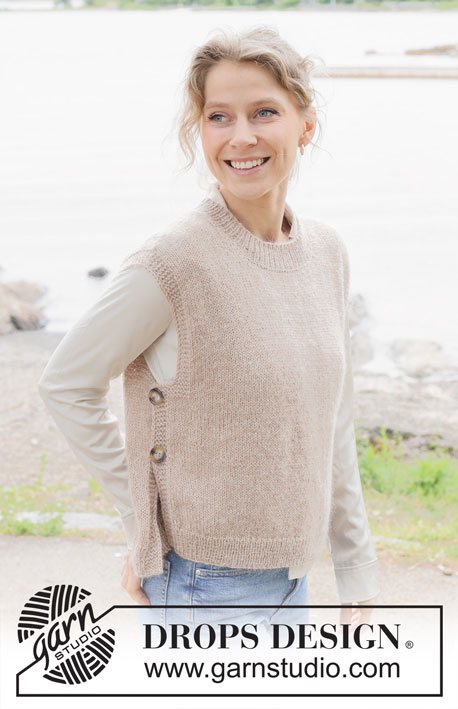 |
Knitted vest in DROPS Alpaca and DROPS Kid-Silk or DROPS Flora and DROPS Kid-Silk. The piece is worked with diagonal shoulders. Sizes S - XXXL.
DROPS 255-9 |
|
|
------------------------------------------------------- EXPLANATIONS FOR THE PATTERN: ------------------------------------------------------- BANDS WITH I-CORD BEGINNING OF ROW: Slip 1 stitch purl-wise with strand in front, knit 1, work 4 garter stitches. END OF ROW: Work until there are 6 stitches left on the row, work 4 garter stitches, slip 1 stitch purl-wise with strand in front, knit 1. Work in the same way from both the right and wrong side. GARTER STITCH (worked back and forth): Knit all rows, from both the right and wrong side. 1 ridge in height = knit 2 rows. BUTTONHOLES: Work the buttonholes on both bands from the right side. ROW 1 (right side): Knit together the 4th and 5th stitch from the edge, make 1 yarn over, work until there are 5 stitches left on the row, make 1 yarn over, knit 2 together and finish the band as before. ROW 2 (wrong side): Work both bands as before, knitting the yarn overs to leave holes. The first set of buttonholes is worked when the piece measures 19-20-21-22-23-24 cm, the second set when the piece measures 28-29-30-31-32-33 cm. KNITTING TIP: When working short rows, there will be a slight hole after each turn. The holes can be closed by tightening the strand or working the technique German Short Rows as follows: Slip the first stitch purl-wise, lay the strand over the right needle and tighten well at the back (2 loops on the needle which are knitted together on the next row). ------------------------------------------------------- START THE PIECE HERE: ------------------------------------------------------- VEST - SHORT OVERVIEW OF THE PIECE: The piece is worked back and forth. The front piece is worked bottom up to the neckline, then the diagonal shoulders are worked separately. The shoulders are joined before working the back piece, top down. The back piece is longer than the front piece. Stitches are knitted up around the neckline before working the neck. FRONT PIECE: Cast on 113-119-129-139-151-165 stitches with circular needle size 3 mm, and 1 strand DROPS Alpaca and 1 strand DROPS Kid-Silk (= 2 strands), or 1 strand DROPS Flora and 1 strand DROPS Kid-Silk (= 2 strands). Work rib, starting from the wrong side as follows: Work 6 stitches according to BANDS WITH I-CORD – read description above, work rib (purl 1, knit 1) until there are 7 stitches left, purl 1 and 6 stitches according to bands with I-cord. Work the rib and the bands with I-cord for 5 cm. Change to circular needle size 4.5 mm. Work 1 row of stocking stitch with the bands as before. AT THE SAME TIME decrease 15-15-17-19-21-23 stitches evenly on the first row (do not decrease across the bands) = 98-104-112-120-130-142 stitches. Continue with stocking stitch and 6 band-stitches as before on each side – remember the BUTTONHOLES and remember to maintain the knitting tension. When the piece measures 28-29-30-31-32-33 cm, continue as follows: Work 6 band-stitches as before, 7-8-10-12-15-19 GARTER STITCHES – read description above, work stocking stitch until there are 13-14-16-18-21-25 stitches left, 7-8-10-12-15-19 garter stitches and 6 band-stitches as before. When the piece measures 30-31-32-33-34-35 cm, cast off on each side for the armholes as follows: ROW 1: Knit 2 together (= 1 stitch decreased), cast off 6-7-9-11-14-18 stitches, work as before to end of row = 91-96-102-108-115-123 stitches. ROW 2: Knit 2 together (= 1 stitch decreased), cast off 6-7-9-11-14-18 stitches, work as before until there are 6 stitches left, work 6 band-stitches as before = 84-88-92-96-100-104 stitches. Continue with stocking stitch back and forth and 6 band-stitches as before on each side. When the piece measures 46-47-48-49-50-51 cm, work from the right side, placing AT THE SAME TIME the middle 24-24-26-26-28-28 stitches on a thread for the neckline and finishing each shoulder separately. RIGHT SHOULDER (when garment is worn): = 30-32-33-35-36-38 stitches. The first row = wrong side. Continue with stocking stitch and the band as before. AT THE SAME TIME cast off for the neckline as follows: Cast off the first stitch from the neck every 2nd row 5-6-5-5-5-5 times, then every 4th row 1-1-2-2-2-2 times = 24-25-26-28-29-31 shoulder-stitches. Continue with stocking stitch and the band as before. When the piece measures 51-53-55-57-59-61 cm, read KNITTING TIP, then work RIGHT DIAGONAL SHOULDER as described below, with the first row from the right side. RIGHT DIAGONAL SHOULDER: Work short rows with turning stitches/German Short Rows as follows: ROW 1 (= right side): Work 22-23-24-26-27-29 stitches as before, turn, ROW 2 (= wrong side): Slip the first stitch purl-wise, with strand in front, tighten the strand over the right needle (2 loops on the needle) and work to end of row as before. Continue like this back and forth, with fewer stitches worked each time. ROW 3: Work 20-21-22-24-25-27 stitches from the right side as before, turn ROW 4: Work in the same way as row 2 ROW 5: Work 18-19-20-22-23-25 stitches from the right side as before, turn ROW 6: Work in the same way as row 2 ROW 7: Work 15-16-16-18-19-21 stitches from the right side as before, turn ROW 8: Work in the same way as row 2 ROW 9: Work 12-13-12-14-15-16 stitches from the right side as before, turn ROW 10: Work in the same way as row 2 ROW 11: Work 9-10-8-10-11-11 stitches from the right side as before, turn ROW 12: Work in the same way as row 2 ROW 13: Work 5-6-4-6-7-6 stitches from the right side as before, turn ROW 14: Work in the same way as row 2 Now increase the shoulder towards the neck: Increase 1 stitch by casting on 1 stitch at the end of each row by the neck. Increase like this every 2nd row a total of 4 times = 28-29-30-32-33-35 stitches. The last row is from the wrong side. Cut the strand and work the left shoulder. LEFT SHOULDER (when garment is worn): = 30-32-33-35-36-38 stitches. The first row is from the wrong side. Continue with stocking stitch and the band as before. AT THE SAME TIME cast off for the neckline as follows: Cast off the first stitch from the neck every 2nd row 5-6-5-5-5-5 times, then every 4th row 1-1-2-2-2-2 times = 24-25-26-28-29-31 shoulder-stitches. Continue with stocking stitch and the band as before. When the piece measures 51-53-55-57-59-61 cm (remember KNITTING TIP), work LEFT DIAGONAL SHOULDER as described below, with the first row from the wrong side. LEFT DIAGONAL SHOULDER: Work short rows with turning stitches/German Short Rows as follows: ROW 1 (= wrong side): Work 22-23-24-26-27-29 stitches as before, turn, ROW 2 (= right side): Slip the first stitch purl-wise, with strand in front, tighten the strand over the right needle (2 loops on the needle) and work to end of row as before. Continue like this back and forth, with fewer stitches worked each time. ROW 3: Work 20-21-22-24-25-27 stitches from the wrong side as before, turn ROW 4: Work in the same way as row 2 ROW 5: Work 18-19-20-22-23-25 stitches from the wrong side as before, turn ROW 6: Work in the same way as row 2 ROW 7: Work 15-16-16-18-19-21 stitches from the wrong side as before, turn ROW 8: Work in the same way as row 2 ROW 9: Work 12-13-12-14-15-16 stitches from the wrong side as before, turn ROW 10: Work in the same way as row 2 ROW 11: Work 9-10-8-10-11-11 stitches from the wrong side as before, turn ROW 12: Work in the same way as row 2 ROW 13: Work 5-6-4-6-7-6 stitches from the wrong side as before, turn ROW 14: Work in the same way as row 2 Insert 1 marker outermost on the shoulder (= mid-top of shoulder); the piece is now measured from here! Now increase the shoulder by the neck: Increase 1 stitch by casting on 1 stitch at the end of each row by the neck. Increase like this every 2nd row a total of 4 times = 28-29-30-32-33-35 stitches. The new stitches are worked in stocking stitch and the last row is from the wrong side. Now the shoulders are joined for the back piece. BACK PIECE: Begin from the right side on the left shoulder, with the next row from the right side, work the left shoulder-stitches as before, then cast on 28-30-32-32-34-34 stitches for the neckline and work the right shoulder-stitches from the right side = 84-88-92-96-100-104 stitches. Continue back and forth with stocking stitch and the bands as before until the piece measures 21-22-23-24-25-26 cm from the marker on the shoulder. Cast on 7-8-10-12-15-19 new stitches for the armholes on each side as follows: ROW 1: Work 6 band-stitches, stocking stitch until there are 6 stitches left, work 6 garter stitches and cast on 7-8-10-12-15-19 stitches = 91-96-102-108-115-123 stitches. ROW 2: Work 6 band-stitches, work 7-8-10-12-15-19 garter stitches, stocking stitch until there are 6 stitches left, work 6 garter stitches and cast on 7-8-10-12-15-19 stitches = 98-104-112-120-130-142 stitches. Continue as follows: Work 6 band-stitches, 7-8-10-12-15-19 garter stitches, stocking stitch until there are 13-14-16-18-21-25 stitches left, work garter stitch until there are 6 stitches left, finish with 6 band-stitches. When the piece measures 23-24-25-26-27-28 cm from the marker on the shoulder, continue with stocking stitch and 6 band stitches on each side until the piece measures 48-50-52-54-56-58 cm from the marker. Change to circular needle size 3 mm and work the next row from the right side as follows: Work the 6 band-stitches, work rib (knit 1, purl 1) until there are 6 stitches left, AT THE SAME TIME increase 15-15-17-19-21-23 stitches evenly spaced, work the 6 band-stitches = 113-119-129-139-151-165 stitches. Continue this rib for 5 cm. Cast off with knit from the right side. The back piece measures 53-55-57-59-61-63 cm from the marker on the shoulder. Due to the diagonal shoulders, the length from the top of the shoulder is approx. 54-56-58-60-62-64 cm on the front piece and 56-58-60-62-64-66 cm on the back piece. NECK: Using circular needle size 3 mm and 1 strand of each quality (= 2 strands). Start from the right side on the right shoulder and knit up approx. 108 to 126 stitches around the neckline – the stitch count must be divisible by 2. Purl 1 round, then knit 1 round. Work rib in the round (knit 1, purl 1) for 3½ cm. Change to circular needle size 4.5 mm and cast off a little loosely. ASSEMBLY: Sew the buttons onto each side of the back piece. |
|

|
|
Have you finished this pattern?Tag your pictures with #dropspattern #driftwoodvest or submit them to the #dropsfan gallery. Do you need help with this pattern?You'll find 27 tutorial videos, a Comments/Questions area and more by visiting the pattern on garnstudio.com. © 1982-2025 DROPS Design A/S. We reserve all rights. This document, including all its sub-sections, has copyrights. Read more about what you can do with our patterns at the bottom of each pattern on our site. |
|

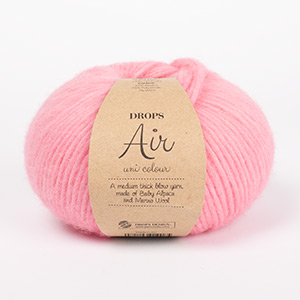






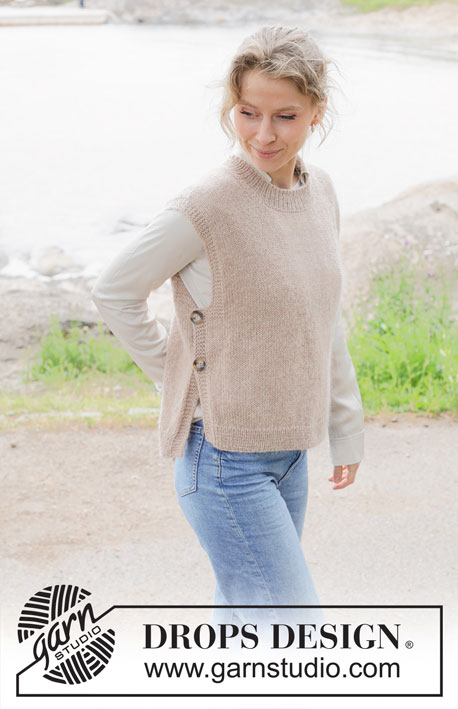


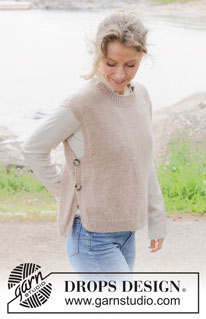
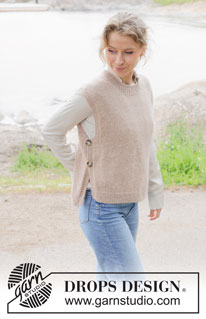
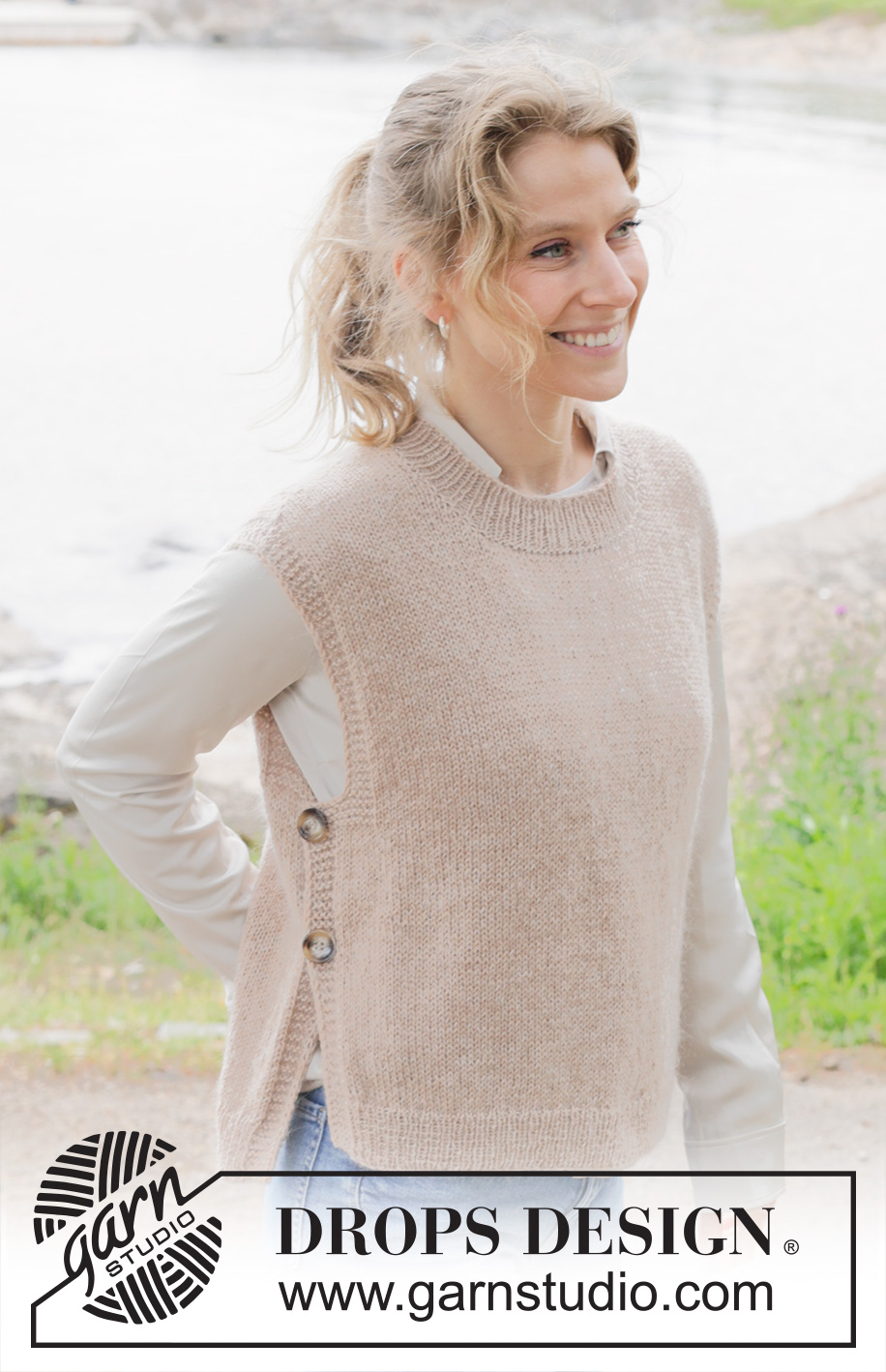


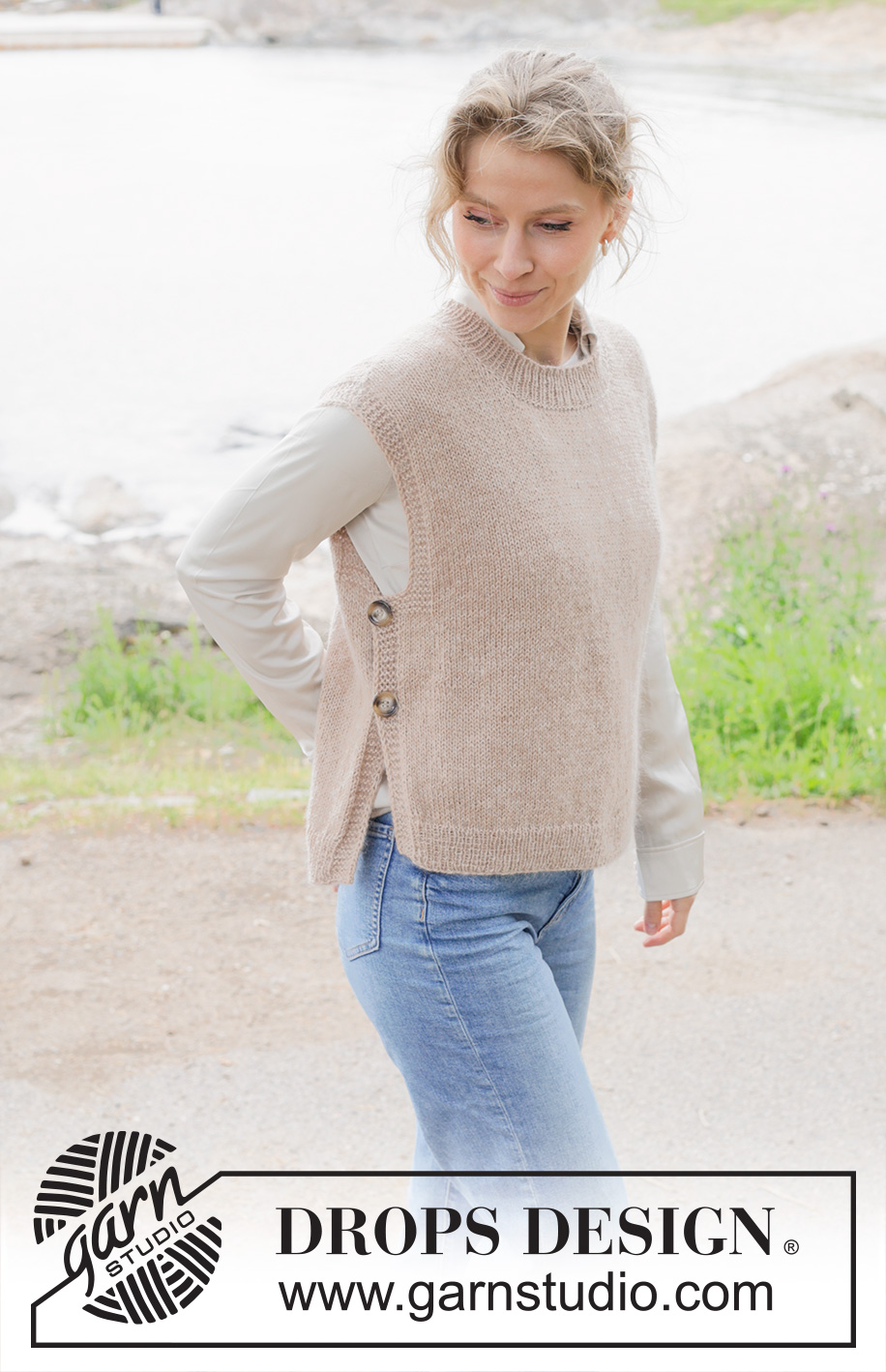



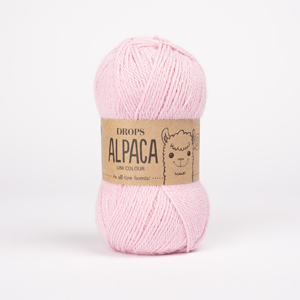
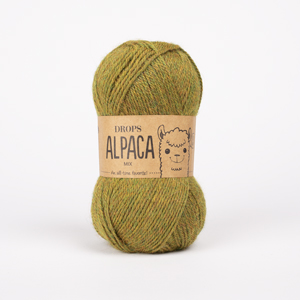
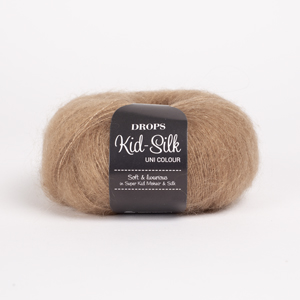
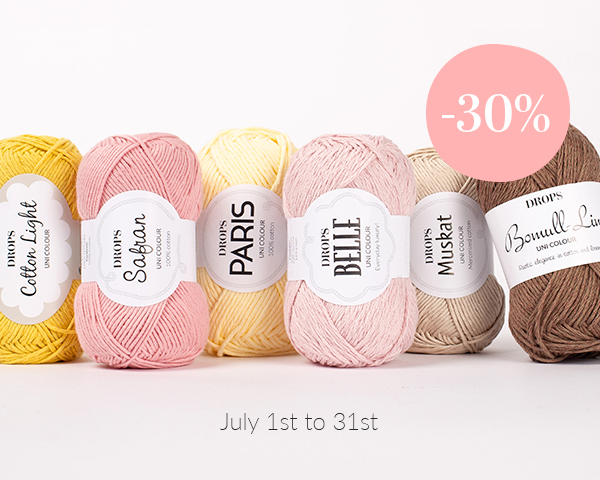
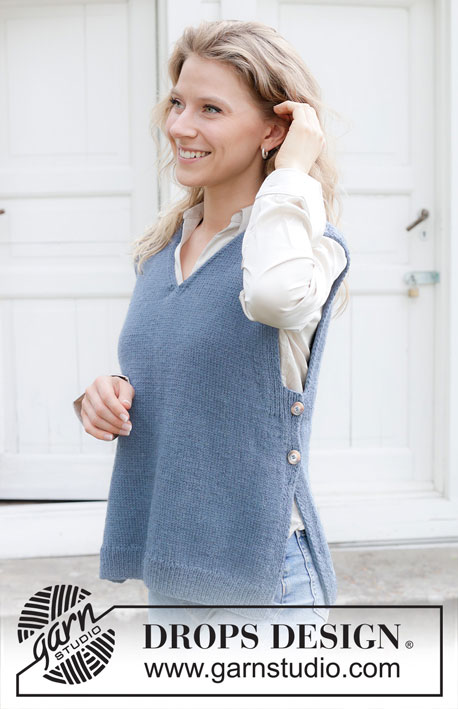





























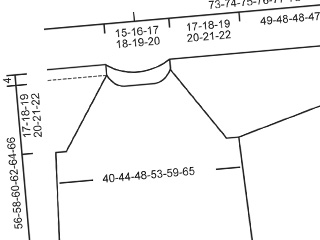

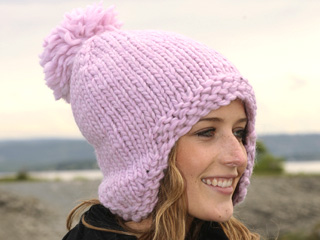
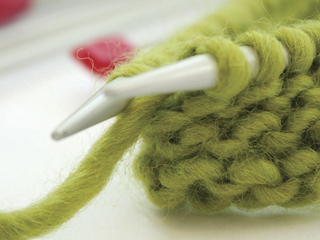

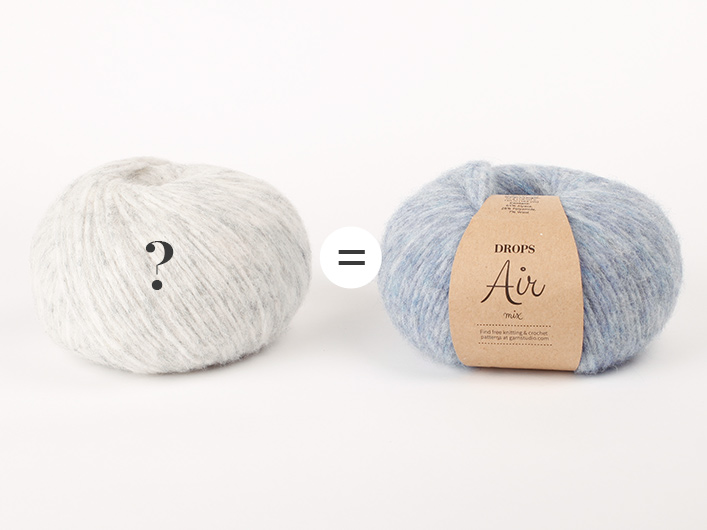
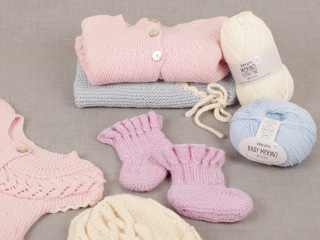

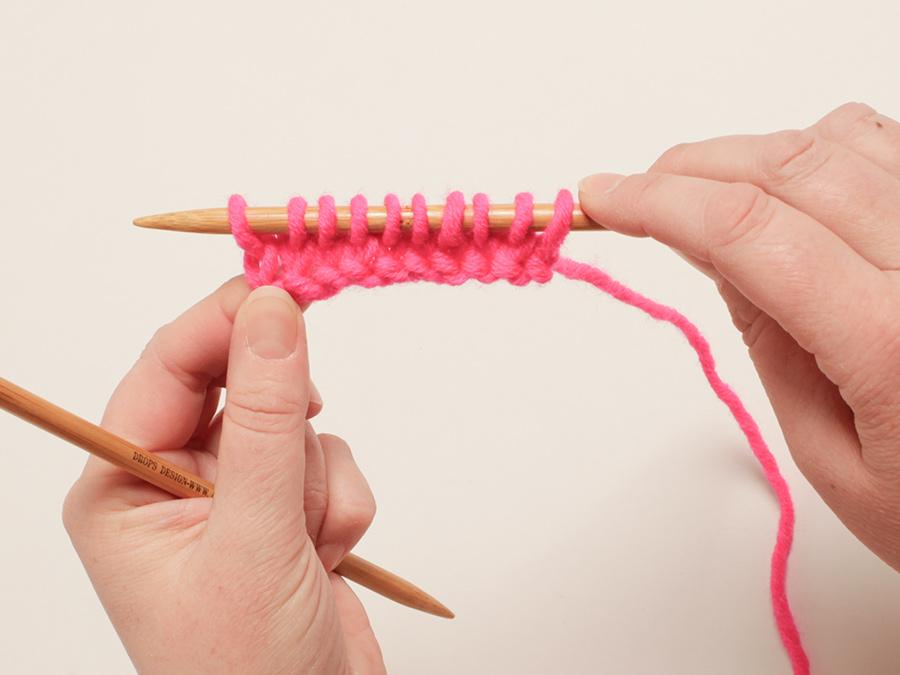
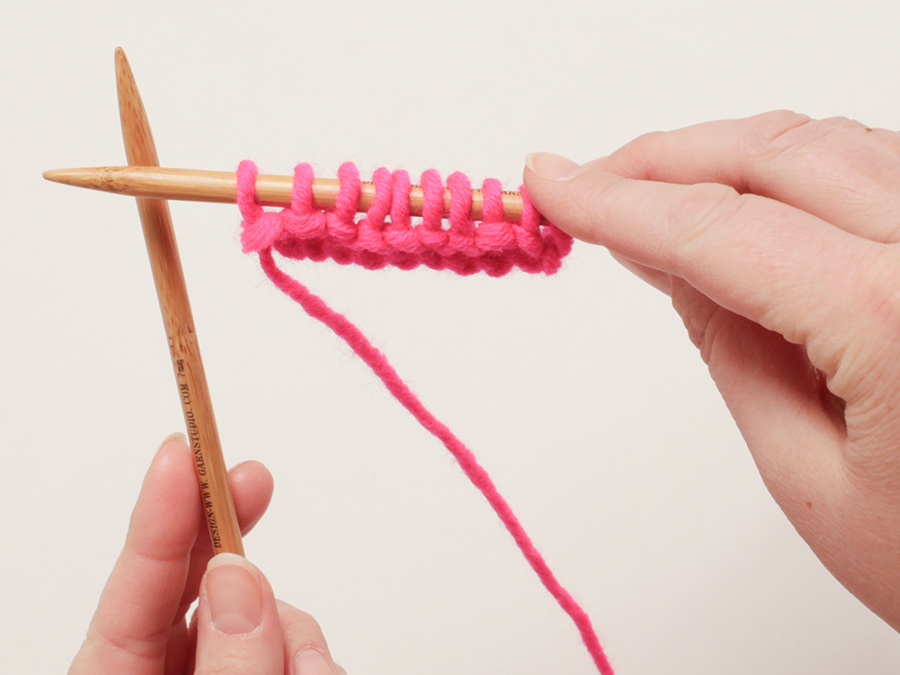
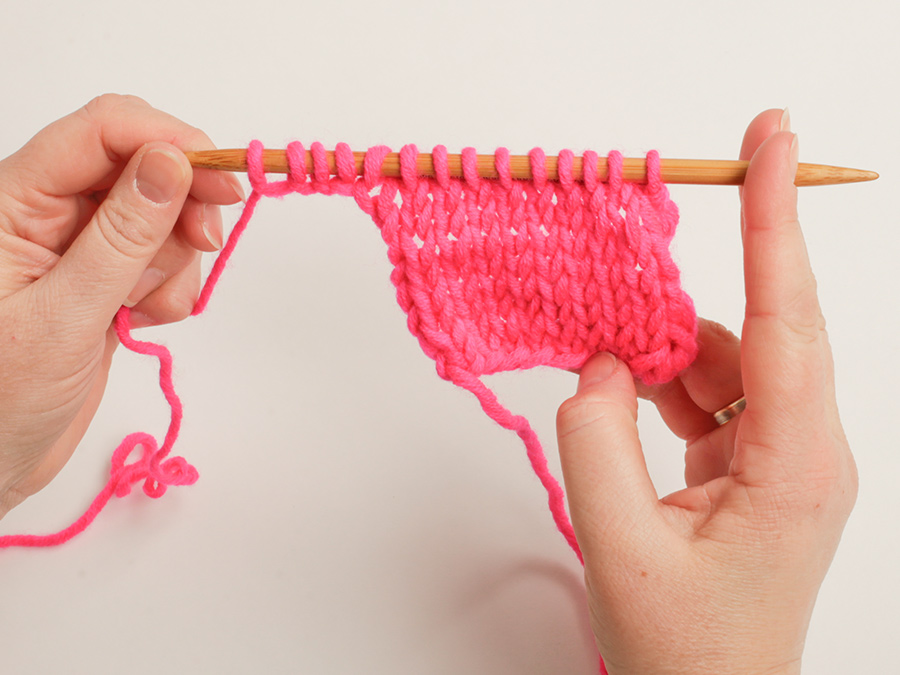
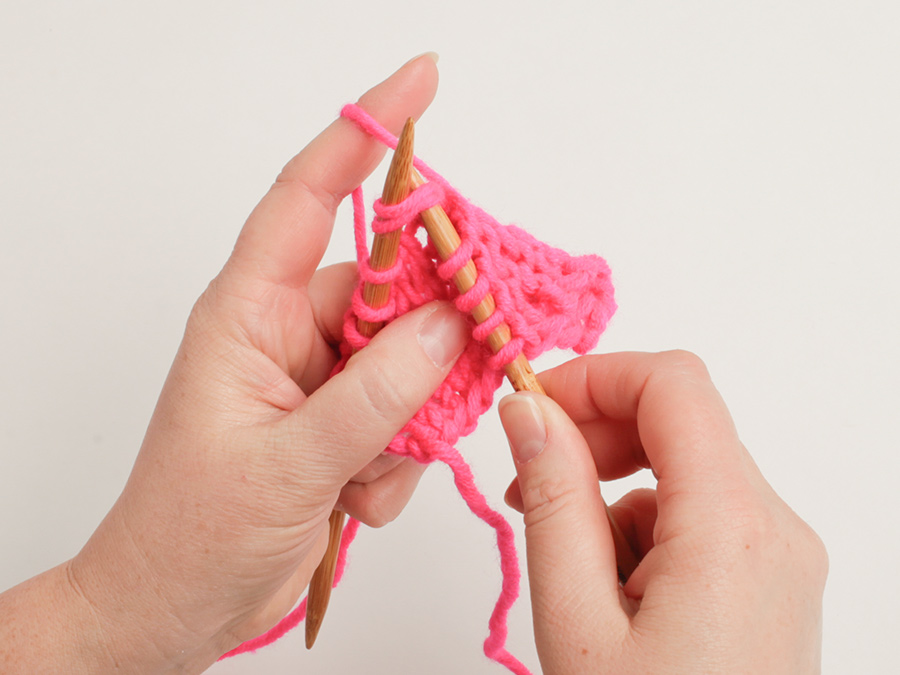
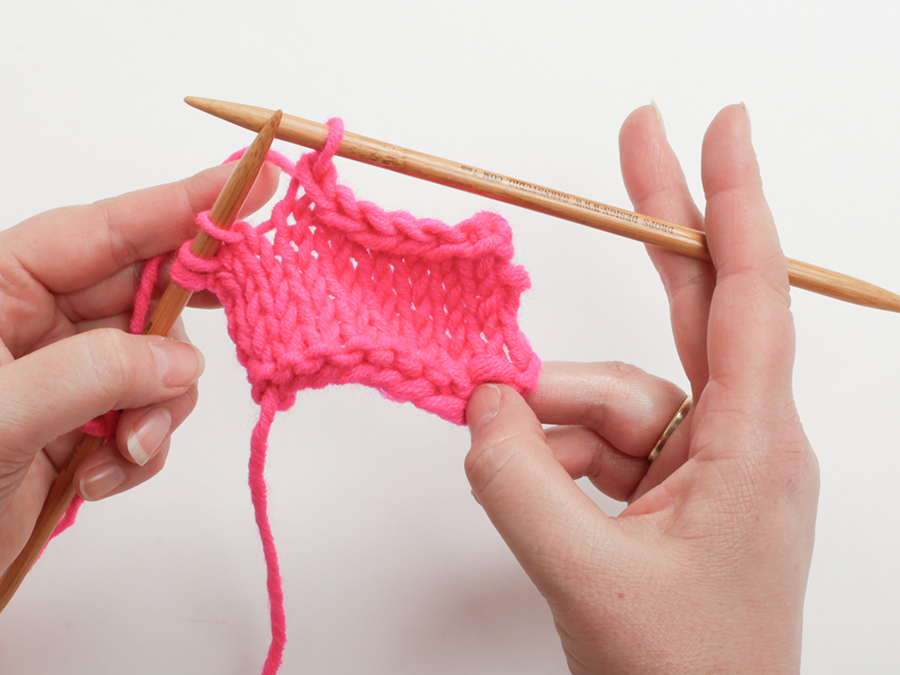
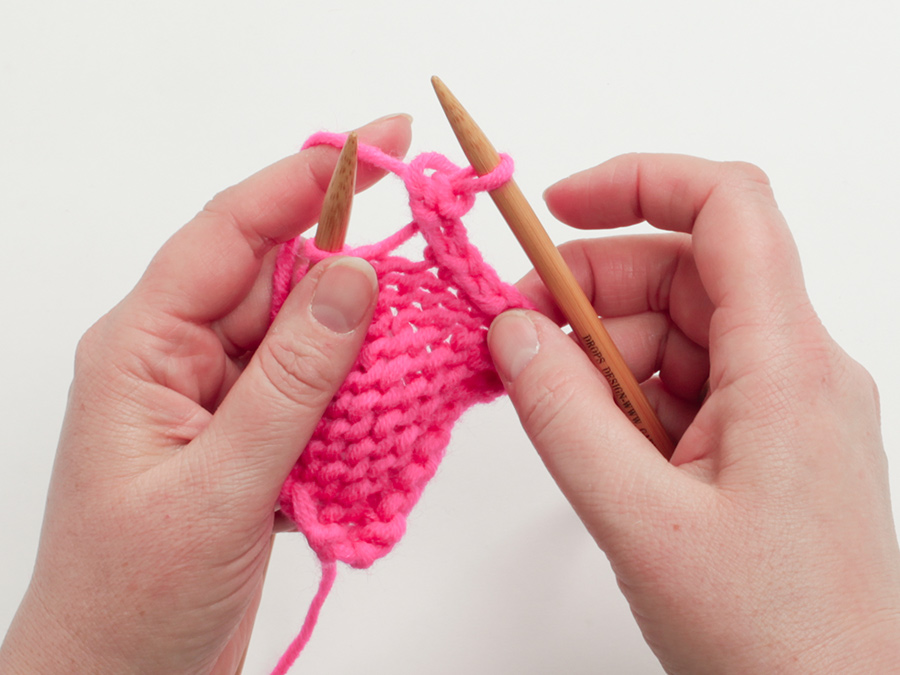
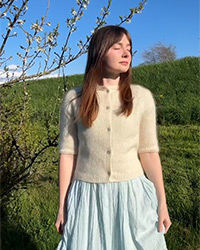
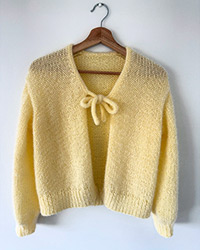


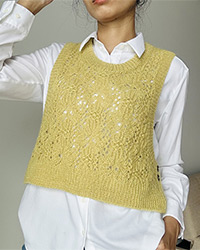

Post a comment to pattern DROPS 255-9
We would love to hear what you have to say about this pattern!
If you want to leave a question, please make sure you select the correct category in the form below, to speed up the answering process. Required fields are marked *.